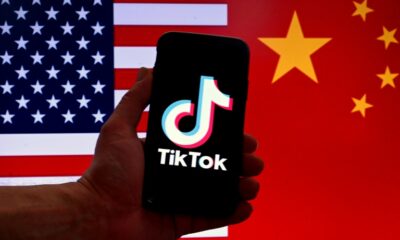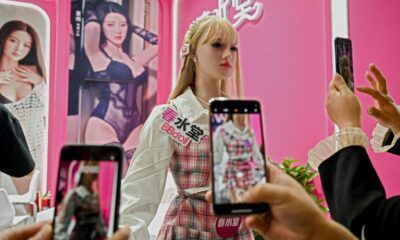Artificial intelligence aficionados are betting that the technology will help solve humanity’s biggest problems, from wars to global warming, but in practice, these may be unrealistic ambitions for now.
“It’s not about asking AI ‘Hey, this is a sticky problem. What would you do?’ and AI is like, ‘well, you need to completely restructure this part of the economy’,” said Michael Littman, a Brown University professor of computer science.
Littman was at the South By Southwest (or SXSW) arts and technology festival in Austin, Texas, where he had just spoken on one of the many panels on the potential benefits of AI.
“It’s a pipe dream. It’s a little bit science fiction. Mostly what people are doing is they’re trying to bring AI to bear on specific problems that they’re already solving, but just want to be more efficient.”
“It’s not just a matter of pushing this button and everything’s fixed,” he said.
With their promising titles (“How to Make AGI Beneficial and Avoid a Robot Apocalypse”), and the ever presence of tech giants, the panels attract big crowds, but they often hold more pragmatic objectives, like promoting a product.
At one meeting called “Inside the AI Revolution: How AI is Empowering the World to Achieve More,” Simi Olabisi, a Microsoft executive, praised the tech’s benefits on Azure, the company’s cloud service.
When using Azure’s AI language feature in call centers, “maybe when a customer called in, they were angry, and when they ended the call, they were really appreciative. Azure AI Language can really capture that sentiment, and tell a business how their customers are feeling,” she explained.
– ‘Smarter than humans’ –
The notion of artificial intelligence, with its algorithms capable of automating tasks and analyzing mountains of data, has been around for decades.
But it took on a whole new dimension last year with the success of ChatGPT, the generative AI interface launched by OpenAI, the now iconic AI start-up mainly funded by Microsoft.
OpenAI claims to want to build artificial “general” intelligence or AGI, which will be “smarter than humans in general” and will “elevate humanity,” according to CEO Sam Altman.
That ethos was very present at SXSW, with talk about “when” AGI will become a reality, rather than “if.”
Ben Goertzel, a scientist who heads the SingularityNET Foundation and the AGI Society, predicted the advent of general AI by 2029.
“Once you have a machine that can think as well as a smart human, you’re at most a few years from a machine that can think a thousand or a million times better than a smart human, because this AI can modify its own source code,” said Goertzel.
Wearing a leopard-print faux-fur cowboy hat, he advocated the development of AGI endowed with “compassion and empathy,” and integrated into robots “that look like us,” to ensure that these “super AIs” get on well with humanity.
David Hanson – founder of Hanson Robotics and who designed Desdemona, a humanoid robot that functions with generative AI – brainstromed about the plus and minuses of AI with superpowers.
AI’s “positive disruptions…can help to solve global sustainability issues, although people are probably going to be just creating financial trading algorithms that are absolutely effective,” he said.
Hanson fears the turbulence from AI, but pointed out that humans are doing a “fine job” already of playing “existential roulette” with nuclear weapons and by causing “the fastest mass extinction event in human history.”
But “it may be that the AI could have seeds of wisdom that blossom and grow into new forms of wisdom that can help us be better,” he said.
– ‘Not there yet’ –
Initially, AI should accelerate the design of new, more sustainable drugs or materials, said believers in AI.
Even if “we’re not there yet… in a dream world, AI could handle the complexity and the randomness of the real world, and… discover completely new materials that would enable us to do things that we never even thought were possible,” said Roxanne Tully, an investor at Piva Capital.
Today, AI is already proving its worth in warning systems for tornadoes and forest fires, for example.
But we still need to evacuate populations, or get people to agree to vaccinate themselves in the event of a pandemic, stressed Rayid Ghani of Carnegie Mellon University during a panel titled “Can AI Solve the Extreme Weather Pandemic?”
“We created this problem. Inequities weren’t caused by AI, they’re caused by humans and I think AI can help a little bit. But only if humans decide they want to use it to deal with” the issue, Ghani said.

 Business4 months ago
Business4 months ago
 Business5 months ago
Business5 months ago
 People4 months ago
People4 months ago
 Events3 months ago
Events3 months ago
 Events6 months ago
Events6 months ago
















